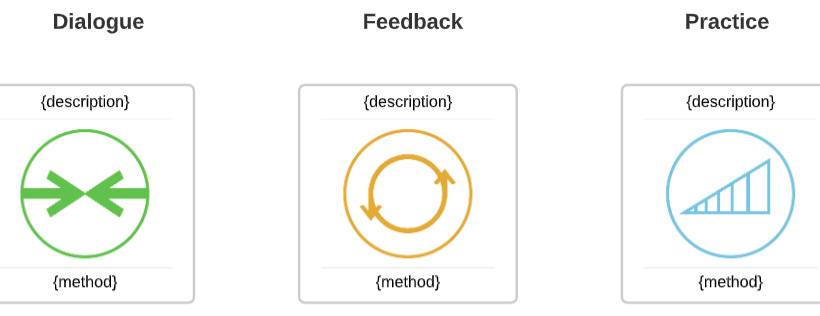What is LEML and why is it an important part of the HyFlex Design Toolkit?
The Learning Environment Modeling Language (LEML) is a visual toolkit for communicating and representing instructional design ideas and plans. It is likened to a course or lesson map or blueprint. It is a visual model. It is a common language shared by all members of the design team. LEML uses symbols to display the components and flow of a lesson or course. Dr. Bucky Dodd refers to it as making your design thinking visual. Bucky Dodd developed LEM (Learning Environment Modeling) at the University of Central Oklahoma. LEM is useful for displaying the big picture of a lesson or course. LEML helps you to quickly identify gaps in engagement and learning environment consistency.
Prior to COVID-19, very few districts, systems and institutions had any or many instructional designers. When schools had to pivot quickly from in-person to online class delivery, many instructors moved from in-person to emergency remote learning using virtual meeting applications like Zoom and Microsoft teams. Quality learning environment design requires intentional design — Intentional prototyping, design, evaluation, and revision. Course design also requires lots of time. Learning Environment Modeling (LEM) and HyFlex/multimodal design together are frameworks for more rapidly creating lessons and courses that promote class continuity during disruptive events. For master course design, LEM ensures everyone is working from the same set of plans. In addition, well-designed courses promote learner retention, progress, and successful completion.
What are the LEML parts?
LEML Components include building blocks that describe the course or lesson elements. These are information, dialogue, feedback, practice, and evaluation. Using color differentiation, contexts show immediately the classroom environment as in-person, synchronous online, asynchronous online, or experiential. Typically, alignment starts with the student learning outcome. Next the evaluation activity is identified or created. There are 3 actions that show the type of flow between the building blocks (who initiated the action: the learner, the instructor, or the system).
What LEML easy to use initially and for modification (prototyping, analysis, diagnosis, revision, and innovation)?
LEML can use programs like Draw.Io using the LEML library or by purchasing reusable items, for example LEML sticky notes from lxstudio.com resources. You can also draw you lesson models by hand or some other way. I highly recommend learning more about LEM and use it during your next course design or redesign.
What can you do with LEML?

